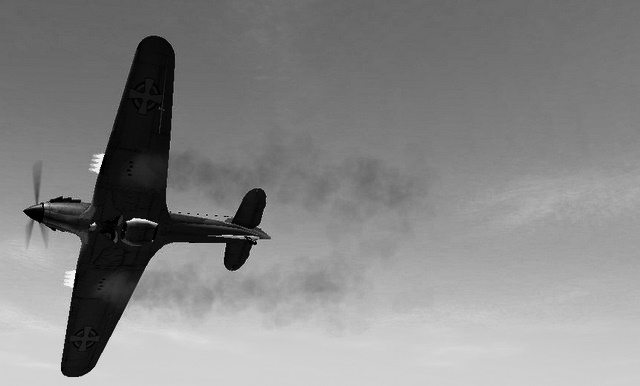
This is still a bit half baked, but while gathering notes for the hier.him tutorial that is upcoming, I came across this note.
Some months ago I was messing around with some smoke mods, and thus, I crossed paths with the .eff type file.
I made this note, which is very incomplete. It starts off with some of the info on other sites and tutorials, but some of which is not accurate, and tries to adress it.
It is not complete, but I hope others here can add to it as time passes.
This is the basic layout, and the best , or collection of best ,old explanations of the .eff file
[ClassInfo]
ClassName TParticlesSystemParams
[General]
MatName Cannonsmoke.mat
Color0 0.64 0.66 0.68 1.0 // Start color (R B G A) 0 = Black 0.65 0.67 0.69 0.11
Color1 0.61 0.61 0.55 0.0 // End color (R B G A) 0.66 0.61 0.55 0.01
nParticles 300 // # of smoke particles 288
FinishTime -1.0 // How fast to draw 1st particle? , -1=draw continuously /Time before smoke starts to dissapear, begins to fade.
MaxR 1.0 // Max repeats? 1.0
PhiN 1.0 // Angular speed 1.0
PsiN 1.0 // Angular speed 1.0
LiveTime 6.0 // How long each smoke from conception to completion 4.0 How long the smoke will continue to come from the wings,
the start begins to fade.
EmitFrq 72.0 // Frequency emission, higher = more smoke
particles 48
EmitVelocity 0.5 4.0 // Min / Max speed of the emission 0.5 4.0
EmitTheta 90.0 0.0 // Min / Max angle of the emission 85 95
GasResist 0.01 // Resistance to expansion, lower = faster dispersal 0.05
VertAccel -0.6 // How fast to move up down vertically -0.6 if you want the smoke to rise "hence to gain altitude"
Wind 1.0 // wind is a random speed which moves particles
1.0 How Much Wind there will be when the smoke leaves the wings
Size 3.0 8.0 // Size of particles, start & ending size 2.0 8.0 The size the smoke will be
Rnd 0.30
So, some of that is not completely accurate, some is good and some is just off.
here is the last keynote I wrote for myself.
my defs
nParticles 4096 The number of particles assigned to a cycle
FinishTime -1.0
MaxR 0.0
PhiN 0.0
PsiN 0.0
LiveTime 4 length of the cycle
TranspTransitionTime 0.0f
EmitFrq 120 speed at which particles assigned is used up
SegmentLen 106
MaxObjectVelocity 150 I think this indicated how fast the smoke travels in the direction of the object that emmits it
EmitVelocity 2.0 5.0
EmitTheta 0.2 5.0
GasResist 0.05 How gradually it disperses, lower value fades away better, highr value stops abruptly. max value is 2/0 I think
VertAccel -0.0 this, and the wind setting, will make the smoke move after emmision. Vert accel seems to be how fats it rises..or falls
Wind 1.2
Size 1.0 2.0 Size at source and size when it starts dispersing
See this has two values. In this case the second is a bigger value, so the smoke will expand before it disperses, try this the other way round for fuel leaks or such.
Rnd 0.1
Unfortunately, I remember little of this, as I only looked into it very quickly.
But I hope this helps you when you next tangle with a .eff file.
What I can telll you is this:
Smoke works in a cycle, and the eff file basically adjusts
-how many partivcles will be used in a cycle
-how long that cycle will last before the next one begins
-how fast the particles you allow for each cycle is used up
...can you see tha math start to emerge in that?
The other important setting is gassresits, which basically means how hard will your smoke resist the urge to dissapear. This does not seem to have effect on when of how long the smoke dissapears, but just HOW it does. whether it fades away or just drops off a cliff sort off.
go figure the rest out, and let us know! I am not doing any smoke effects now, so I am not getting back to this in the near future, but I wanted to post what I had here, for the help of others
And then lastly, of course the eff file points to a mat file, which points to a texture.
Compare eff files of shells with smokes and see what you can learn
My explanations may be way off. I hope this gets you jump started though.
S!
CirX
-
 Author
Topic: Smoke & Fire Effects, the structure of .eff files explained (Read 13602 times)
Author
Topic: Smoke & Fire Effects, the structure of .eff files explained (Read 13602 times)


